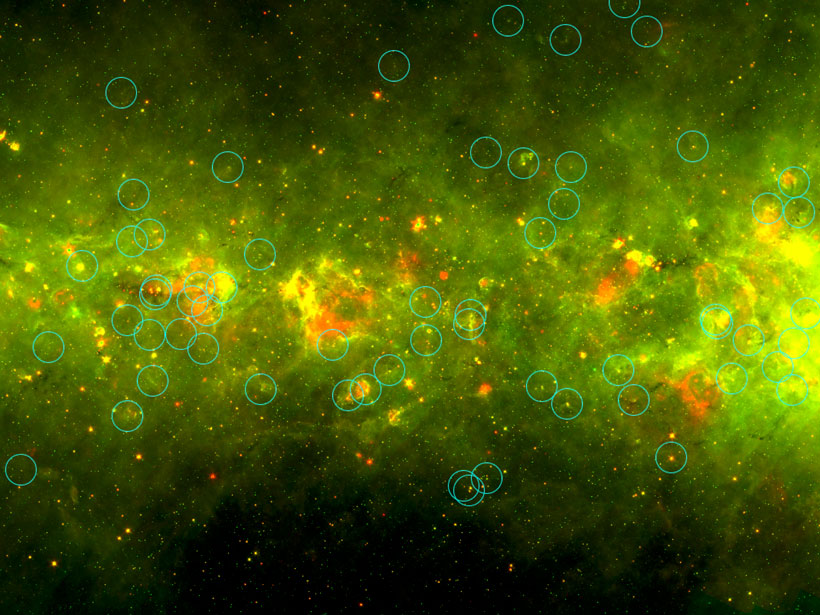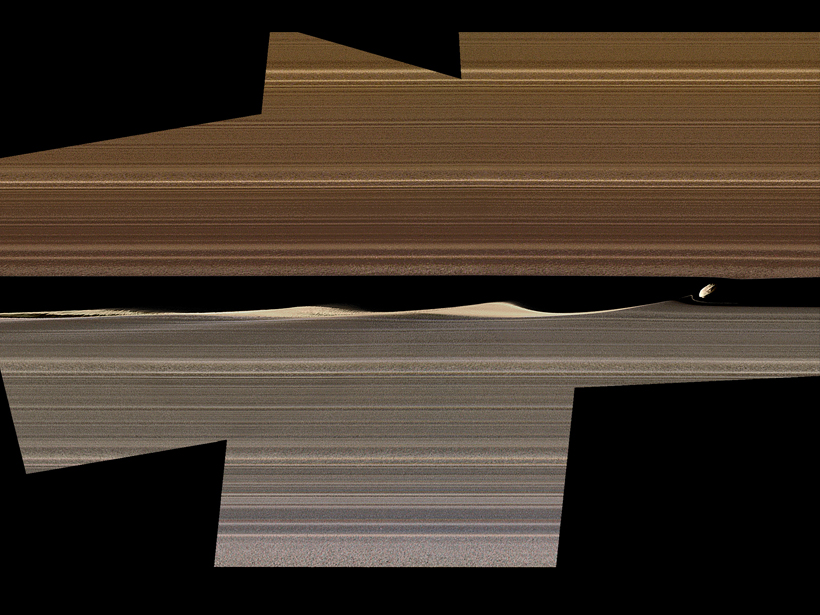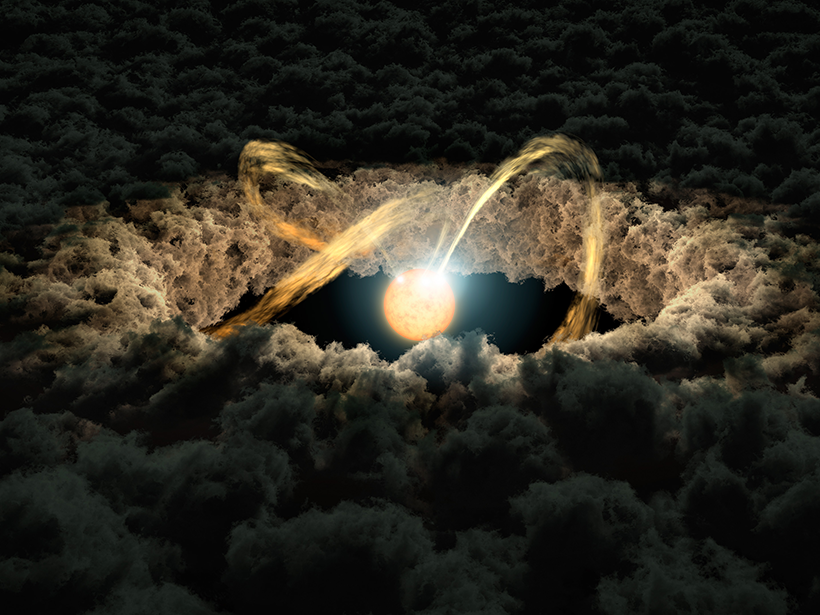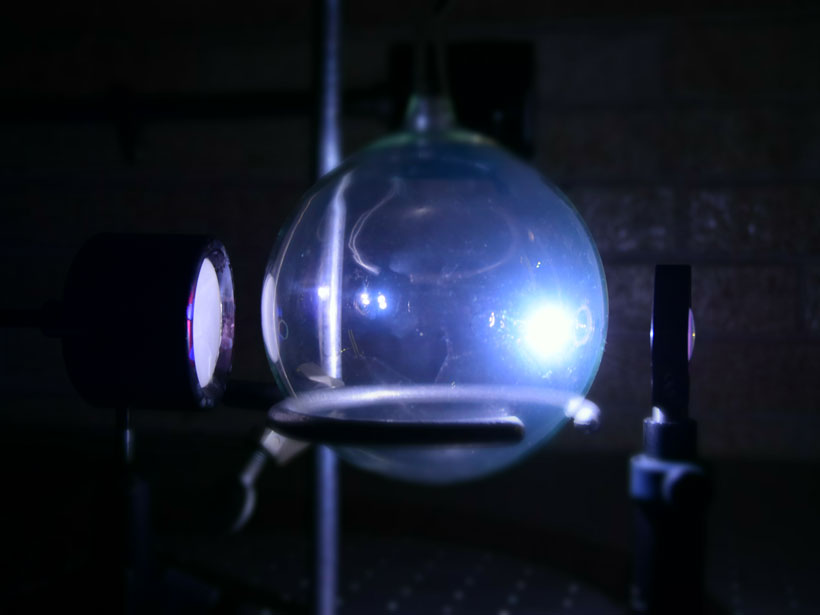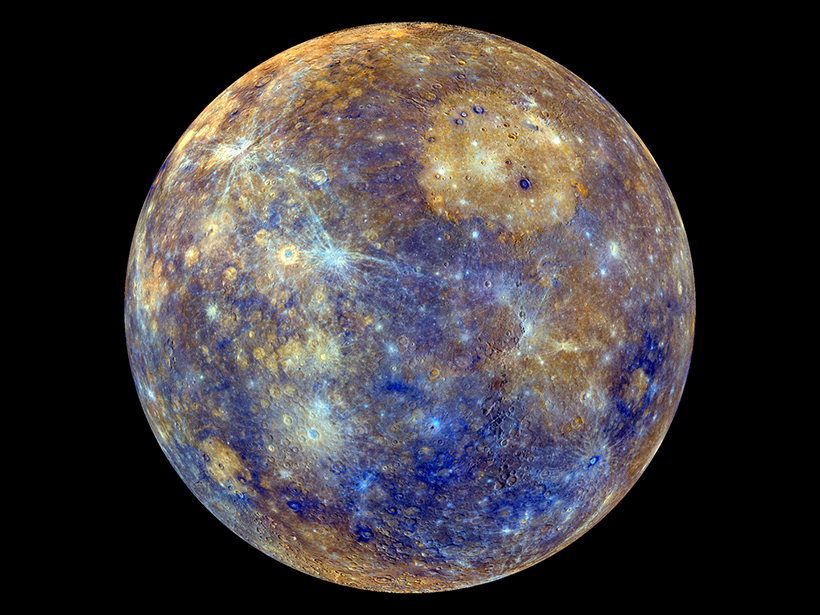The online community of the Milky Way Project citizen scientists helped scientists identify compact star-forming regions now known as yellowballs.
planetary evolution
The Cassini Mission May Be Over, but New Discoveries Abound
New analysis of high-resolution images shows ring textures and disruptions within Saturn’s rings in unprecedented detail.
Giant Planets and Brown Dwarfs Form in Different Ways
Once thought to be part of the same population, planets larger than Jupiter and “failed stars” likely grow via different mechanisms, the Gemini Planet Imager Exoplanet Survey has shown.
The Quaking, Shrinking Moon
New evidence suggests that the Moon may still be tectonically active.
Passing Object May Have Kicked Up Dust from a Planetary Disk
The elongated tail of the SU Aurigae protoplanetary disk was likely formed as a result of a flyby from a substellar object.
Hawaiian Volcano Observatory Searches for a New Home
Seismic activity during the eruption of Kīlauea damaged the Hawaiian Volcano Observatory beyond repair. Now officials are looking for a new site.
How Mars Lost Steam
Solar winds are not the main culprit in stripping the planet’s atmosphere, a new study suggests.
Rover and Lasers Unlock Clues to Early Martian Atmosphere
Sediments from the Curiosity rover and experiments using tanks of gas and laser beams helped reveal how water continued to flow on Mars after the planet lost its atmospheric carbon dioxide.
Mercury Mission Will Map Morphology and Measure Magnetics
BepiColombo may launch as early as this weekend. It seeks to unravel the mysteries of Mercury’s geologic and magnetic past and map the small planet’s cratered surface.
New Exoplanet Telescope Detects Its First Two Planets
The two possible planets, each larger than Earth and too hot to be habitable, are the first of hundreds of Earth-sized exoplanets expected to be discovered by a recently launched telescope.

